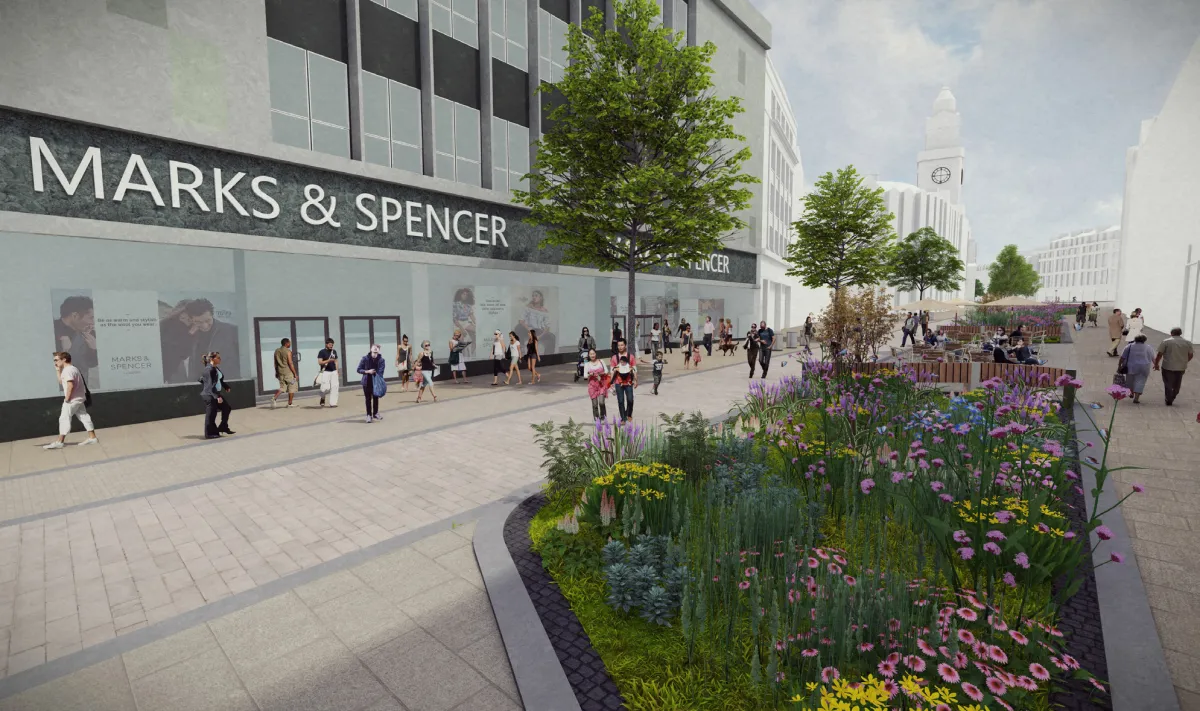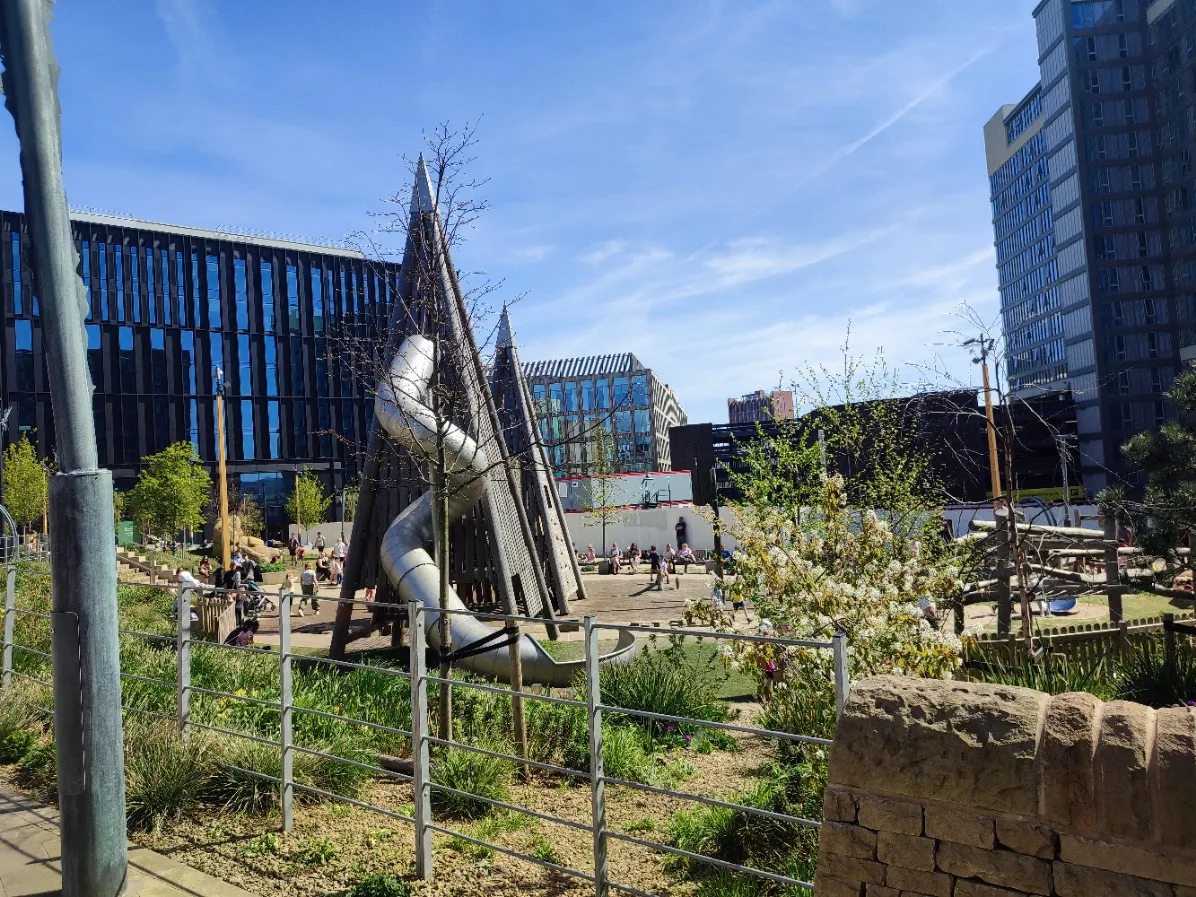Dear readers — January: a tricky time to be in the retail trade. Perhaps especially on Fargate, a street that’s taken more than its fair share of battering in recent years. Some older readers will no doubt remember its heyday, when the great and the good thronged to its high-end shops. Others will only have witnessed its recent decline.
But the most recently arrived will only know it as one thing: a building site. For two years, major work to regenerate the area has been taking place, although not quickly enough for many. Now that it's nearing completion (we are assured) we wanted to ask what it’s all been for, and whether it has a chance of breathing life back into a humbled high street. Dan Hayes reports.
Editor’s note: At The Tribune we always seek to cover the issues that really matter to the city of Sheffield rather than national stories or celebrity clickbait. However, we can’t continue to do this kind of journalism without your support. If you are able, please consider taking out a subscription to The Tribune. For just £1.71 a week (if you pay for a year upfront) you will not only get 16 newsletters packed with great stories and original reporting, you will be helping support the long-term survival of high-quality journalism in Sheffield.
Your Tribune briefing 🗞️
🌏 The University of Sheffield plans to get rid of its specialist undergraduate degrees in Japanese, Chinese and Korean, while also making “significant” staffing cuts to the School of East Asian Studies. A spokesperson for the Sheffield Needs East Asian Studies campaign told Now Then: “After six decades at the forefront of the study of this vitally important region and at a time of increasing global uncertainty, the university, and the UK more widely, should be expanding our expertise, not retreating from the world.” However, a university spokesperson responded that the cuts were a response to declining student numbers, adding: “We are proposing these adjustments to help secure the future of our excellent research, teaching and knowledge exchange in this field. The proposals are still at an early stage and we will be launching a full consultation with our staff in East Asian Studies shortly.”
🗡️ The son of Sheffield knife maker Stan Shaw is “staggered” that a beer logo honouring his late father has been discontinued, on the grounds it risks promoting violence. The logo for “Stan” ale, created by Little Mesters Brewing company in 2022, was a cartoon of Stan holding a knife, while its tap featured an ornamental knife handle. However, alcohol industry regulator The Portman Group have now upheld a complaint against the ale’s branding, ruling that beer labels should not suggest any association with violence.
🔧 The Advanced Manufacturing Research Centre has named its new (interim) CEO, after its last boss Steve Foxley resigned at the end of November. Professor Ben Morgan, previously the centre’s research director and chief technology officer, started his career there as a project engineer back in 2009 before gradually rising through the ranks. He told Aero Mag, a news source for all things aerospace manufacturing, that he is “excited and humbled to lead a wonderful organisation for which I have devoted my career,” especially at a “critical time” for the UK’s advanced manufacturing industry.
Fargate’s decline has been brutal. Can a spruce up bring back the good times?
By Dan Hayes
“There is a charm about it at all times, early in the morning when trams are disgorging their hundreds of workers, and a few hours later when limousines, jaunty sports models, and cheery old-timers, stream through the centre of Sheffield one after another.
"It is the happy hunting ground of all shoppers, whether of the leisured class who saunter up and down between the hours of 11am and 1pm, or the busy housewife who finds that afternoons are more convenient and joins the crowd always to be found — especially on Saturday.”
It might seem strange to many modern day residents of Sheffield, but those words in the Sheffield Daily Telegraph from Friday 13 January, 1928, were written about Fargate. By the 1920s the street was entering its golden period, its pavements packed with shoppers and grand Sheffield names including Cole Brothers, the provisions merchant Davys, Tuckwoods restaurant and the Yorkshire Penny Bank (which later became Yorkshire Bank).
Fargate is still referred to in some circles as the city’s “premier shopping street”, although often without much conviction. When we visited this week, there were eight empty units, two of which are soon to be filled, and five phone and vape shops, two of which are closed. It may once have been Sheffield’s premier shopping street. It certainly isn’t any more.
On a chilly and wet Thursday morning, the street has a smattering of people trudging through with their hoods and brollies up. A sign on one of the fences says that the work to regenerate the street (which started in May 2023) is in its final stages, although the amount of digging and concrete pouring that is still going on makes me question how close to completion it actually is. Most people I speak to are supportive and are interested to see what it is like when it's finished, even if they think it has taken far too long.
Dave Mattock, 64, of Totley, has come into town to meet some friends in Atkinson’s and is now off to McDonald’s for his lunch. What does he think of Fargate now, I ask. “It used to be good,” he says. “Now it’s just empty shops and old people.” He goes on to say that he thinks the work that is taking place looks good and that it “should be alright” when finished. But Wendy Hutchinson is less positive. Now 81, she remembers the heyday of Fargate but now mainly shops on The Moor and only comes here for Marks and Spencer. “It’s such a shame to see it like this,” she says. Is the regeneration not a way of bringing the good times back, I ask. “I can’t see that much is going to change other than a few plants,” she says. “Everything Sheffield Council does is a disaster. Do you remember those monstrosities [the ill-fated Container Park] they put at the top of Fargate?”
“A few plants” is too harsh. When complete there will be a new access road, benches, Grey to Green style planting and trees, state-of-the-art underground bins to replace industrial dumpsters, and built-in power connections so outside events can take place. There’s also a plan to spruce up the shop fronts, and the total bill for the project is over £15 million.
But is it a good investment? The money that has been spent on Fargate came from the government’s Future High Street Fund, and was originally meant to cover work on High Street and Castle Square as well. As the bills have kept climbing, the council has ended up putting all that government cash into Fargate alone. That isn’t surprising, given the street’s prominent position and visible fall from grace. But will giving the street an expensive facelift actually bring spenders back?

Comments
How to comment:
If you are already a member,
click here to sign in
and leave a comment.
If you aren't a member,
sign up here
to be able to leave a comment.
To add your photo, click here to create a profile on Gravatar.







